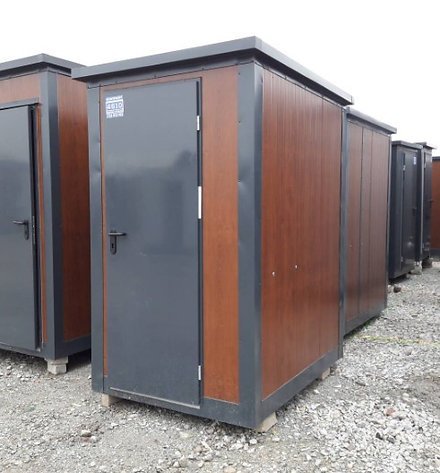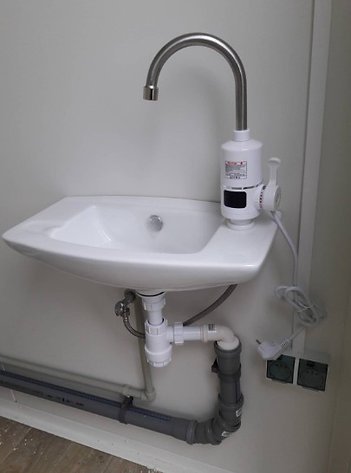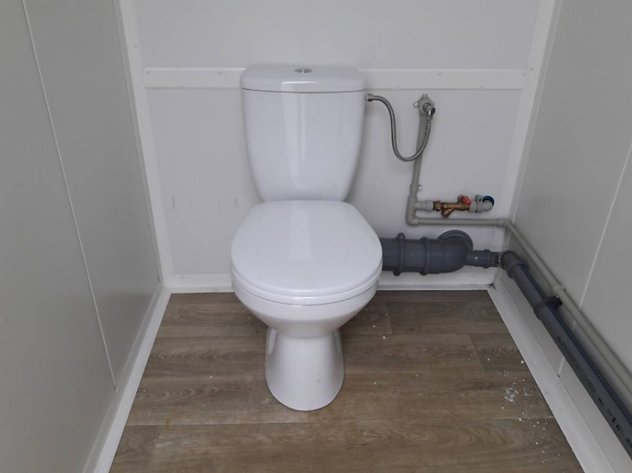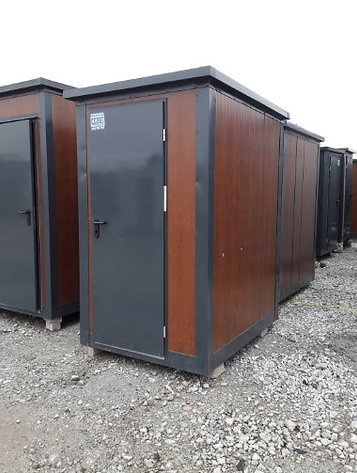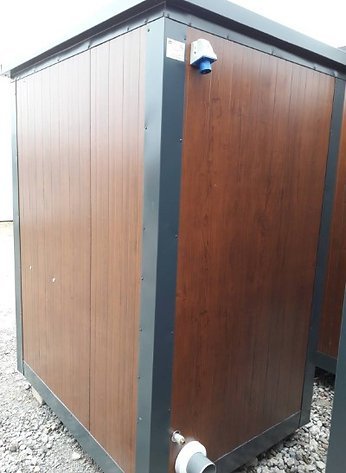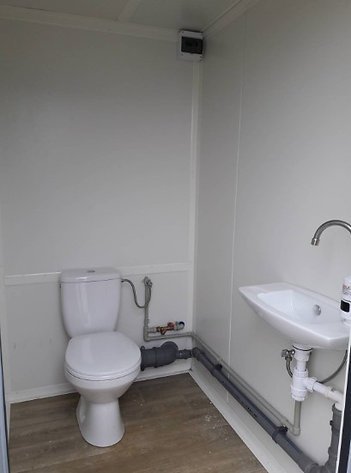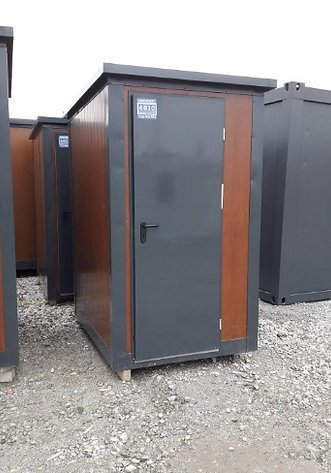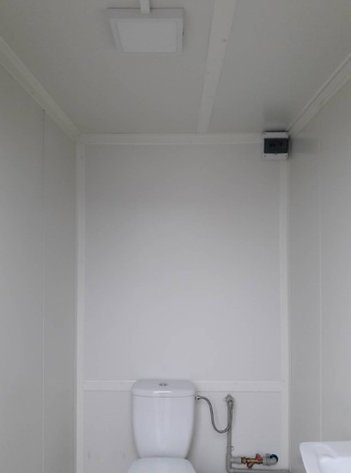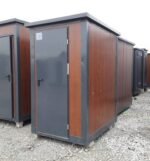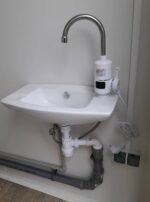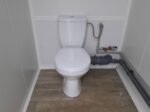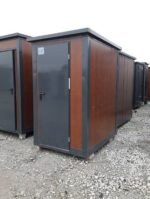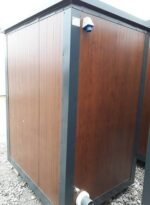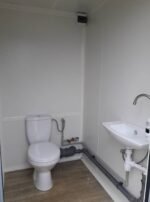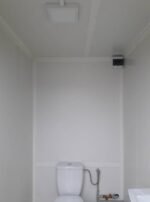Conteneur Sanitaire Simple WC 130x176x224
Description et Détails du Conteneur Sanitaire Simple WC 130x176x224
Modèle : Conteneur Sanitaire Simple WC
Dimensions :
Largeur : 1,30 m
Longueur : 1,76 m
Hauteur : 2,24 m
Superficie totale : 2,29 m²
Caractéristiques principales :
Structure :
Le conteneur est fabriqué en carton Obornicka de 5 cm d’épaisseur, offrant une isolation de base tout en étant léger et facile à déplacer.
Ventilation par gravité : Le conteneur est équipé d’un système de ventilation naturelle, assurant un flux d’air constant pour maintenir un environnement frais à l’intérieur.
Installations complètes :
Plomberie et Évacuation : Toutes les installations de plomberie sont déjà en place, prêtes à être raccordées aux connexions externes :
Raccordement des eaux usées : Ø110 mm
Raccordement d’eau : 3/4 pouce
Électricité : Le conteneur est équipé d’une installation électrique standard (230V), prêt à alimenter les appareils nécessaires.
Chauffe-eau instantané : Un chauffe-eau instantané est installé à côté du robinet, fournissant de l’eau chaude immédiatement.
Prêt pour la logistique :
Le conteneur est préparé pour le chargement et le déchargement à l’aide d’un chariot élévateur, ce qui facilite son transport et son installation sur site.
Options supplémentaires :
WC sans cadre : Le conteneur peut être livré avec un WC sans cadre pour une configuration plus moderne et hygiénique.
Usage recommandé : Ce conteneur sanitaire simple est idéal pour des utilisations temporaires ou permanentes dans divers environnements, tels que les chantiers de construction, les événements extérieurs, ou comme solution d’appoint pour des installations existantes. Grâce à ses dimensions compactes et à ses installations complètes, il offre une solution pratique et fonctionnelle pour les besoins sanitaires de base.
2,100.00€
Référence : SA1193166
Commentaires des clients
Online Sports Nutrition and Natural Dietetics.
Chances are there wasn't collaboration, communication, and checkpoints, there wasn't a process agreed upon or specified with the granularity required. It's content strategy gone awry right from the start. Forswearing the use of Lorem Ipsum wouldn't have helped, won't help now. It's like saying you're a bad designer, use less bold text, don't use italics in every other paragraph. True enough, but that's not all that it takes to get things back on track.
The villagers are out there with a vengeance to get that Frankenstein
You made all the required mock ups for commissioned layout, got all the approvals, built a tested code base or had them built, you decided on a content management system, got a license for it or adapted:
- The toppings you may chose for that TV dinner pizza slice when you forgot to shop for foods, the paint you may slap on your face to impress the new boss is your business.
- But what about your daily bread? Design comps, layouts, wireframes—will your clients accept that you go about things the facile way?
- Authorities in our business will tell in no uncertain terms that Lorem Ipsum is that huge, huge no no to forswear forever.
- Not so fast, I'd say, there are some redeeming factors in favor of greeking text, as its use is merely the symptom of a worse problem to take into consideration.
- Websites in professional use templating systems.
- Commercial publishing platforms and content management systems ensure that you can show different text, different data using the same template.
- When it's about controlling hundreds of articles, product pages for web shops, or user profiles in social networks, all of them potentially with different sizes, formats, rules for differing elements things can break, designs agreed upon can have unintended consequences and look much different than expected.
This is quite a problem to solve, but just doing without greeking text won't fix it. Using test items of real content and data in designs will help, but there's no guarantee that every oddity will be found and corrected. Do you want to be sure? Then a prototype or beta site with real content published from the real CMS is needed—but you’re not going that far until you go through an initial design cycle.



